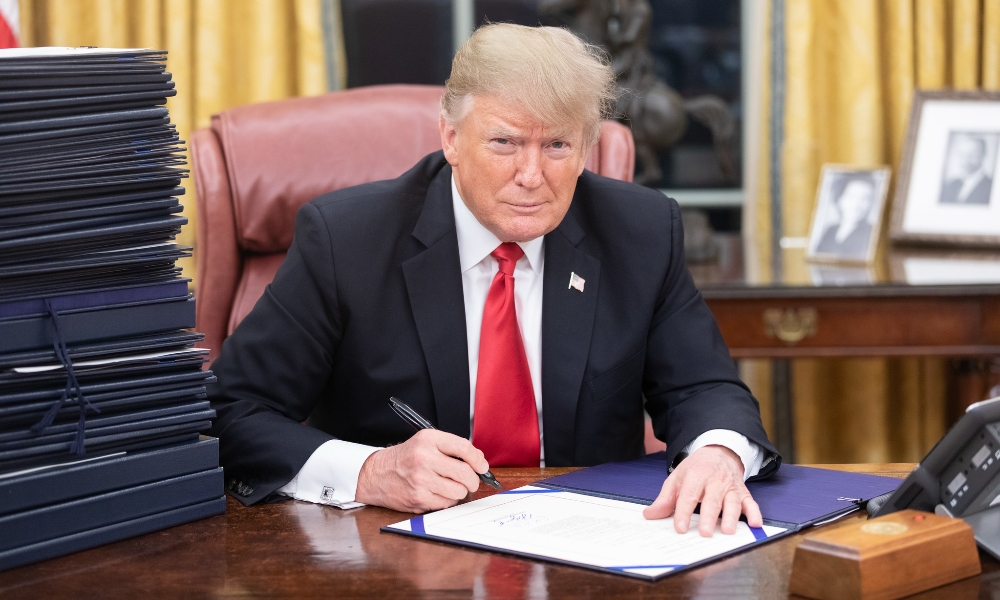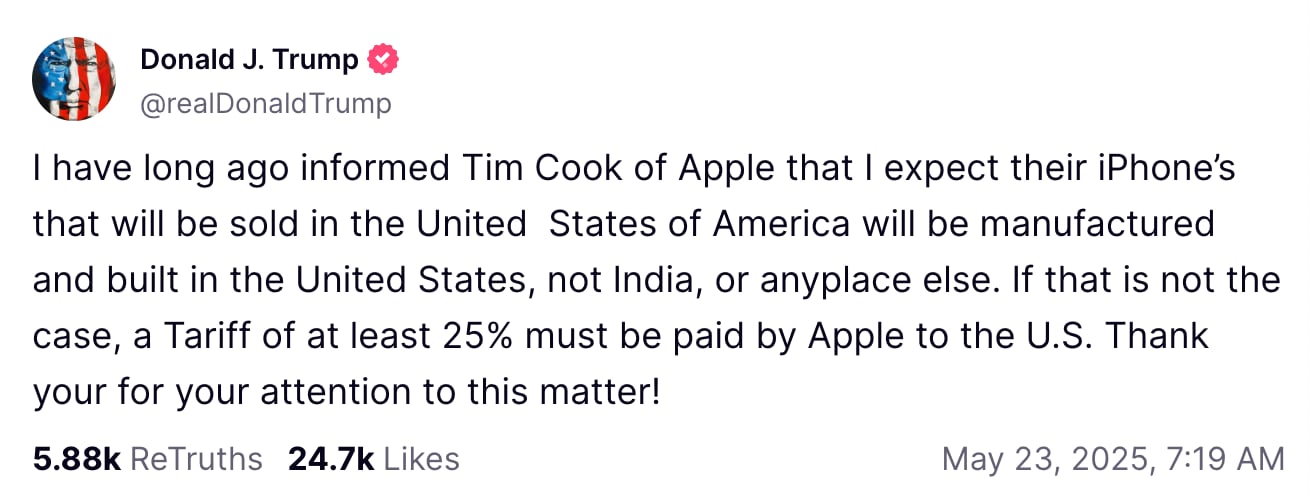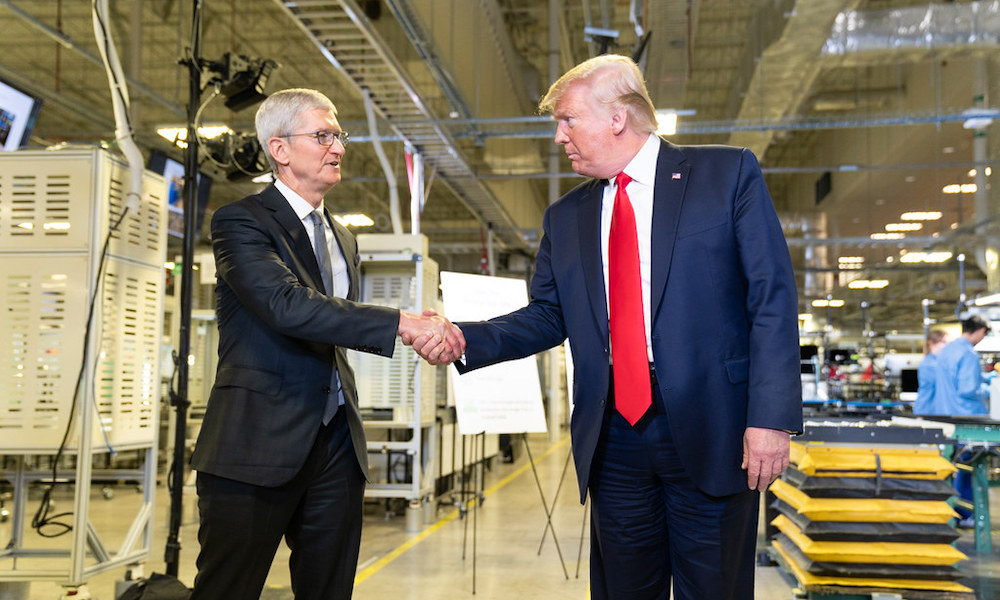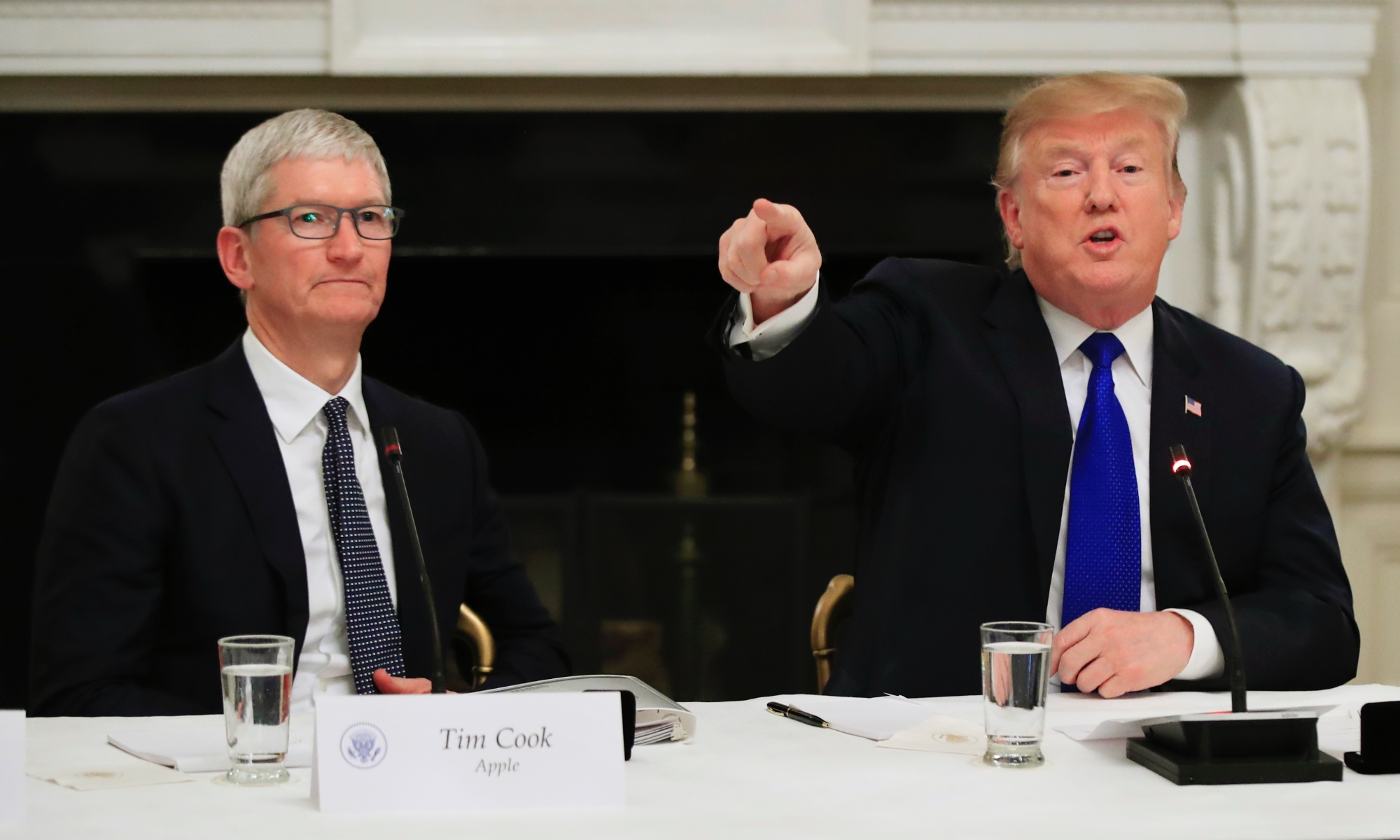Trump Plans to Hit Apple with 25% Tariff on All iPhones Made Outside of the US

Toggle Dark Mode
President Donald Trump hasn’t exactly been mincing words when he insists that Apple should manufacture iPhones in the US — and he “absolutely” believes it’s possible.
So, it’s not a big surprise that he’s looking for ways to “persuade” Apple (and other tech companies) to move their supply chains stateside, and since he’s repeatedly said that “tariff” is the most beautiful word in his dictionary, that pressure will come in the form of — you guessed it — higher tariffs on consumer products made outside of the United States.
Last week, Trump said he had a “little problem with Tim Cook” due to Apple’s decision to shift Chinese iPhone production to India instead of the US. “He is building all over India,” Trump said while adding that Cook promised to increase its production in the United States after they had a little chat.
This morning, the President announced on Truth Social that “a Tariff of at least 25% must be paid by Apple to the U.S.” for any iPhones that are not “manufactured and built in the United States.

When Trump was later asked about whether this threatened tariff would apply solely to Apple, he said that “it would be more,” according to Bloomberg, adding that “Samsung any anybody who makes that product” would be included, “otherwise it wouldn’t be fair.”
A US official said Trump’s announcement followed a Tuesday meeting with Apple CEO Tim Cook, in which the President made it clear that no iPhones sold in the US will be exempt from tariffs unless they’re also built in the US.
[Tim Cook] said he’s going to India to build plants. I said, that’s okay to go to India, but you’re not going to sell into here without tariffs, and that’s the way it is.
President Donald Trump
Several sources have suggested that Cook’s “very good relationship” with President Trump was what helped the company avoid the last round of tariffs. Not long after a staggering 145% “retaliatory” tariff on China came into effect, the Trump administration exempted many consumer electronics. However, that turned out to be a temporary reprieve when both Trump and his Commerce Secretary, Howard Lutnick, announced that it was a “recalibration” that would simply move those product categories into a different tariff “bucket.”
These new tariffs on semiconductors and related electronics are expected to take effect over the next few weeks, but it’s unclear whether Trump’s promise of a 25% tariff on iPhones and other smartphones not made in the US is part of this initiative or a separate one.
Earlier today, Trump told reporters that the tariffs would be “appropriately done” and ready to be put into effect by the end of June, although he didn’t provide any further details. That technically gives Apple less than six weeks to start manufacturing iPhones in the United States if it wants to avoid tariffs. It’s safe to say that’s not going to happen.
Apple has been able to shift more production to India because it’s been gradually doing so since 2017 in an effort to diversify its supply chain. It accelerated that process in 2019, during the last US-China trade war in Trump’s first term, while also ramping things up in Indonesia and Vietnam. However, it’s been challenging to reduce its dependency on China — and it doesn’t help that China is doing everything it can to prevent Apple from leaving.
Still, even with an established supply chain presence in India — and a sizable new investment by Foxconn — analysts are skeptical that Apple will be able to manufacture enough iPhones in that country to meet US consumer demand. Apple had reportedly hoped to skirt some of the highest tariffs — those targeted at China — by moving production to lower-tariffed countries like India and even Brazil, where it also already manufactures a relatively small number of iPhones for the South American market.
However, it appears that Trump is having none of that, with a promise that iPhones and other smartphones not made in the US will face a special 25% tariff, regardless of the country of origin. It’s unclear whether this will be an additional 25% on top of the baseline tariffs for those countries, but either way, it’s going to hit Apple’s bottom line. The company is already mulling price hikes for the iPhone 17 lineup; however, it’s reluctant to admit that any price increases are the result of tariffs after Amazon and Walmart have been criticized by the White House for passing on the tariffs to consumers instead of absorbing them.









